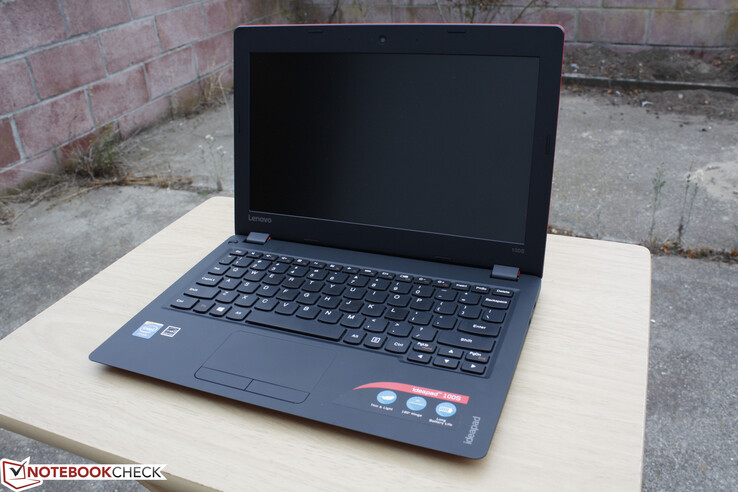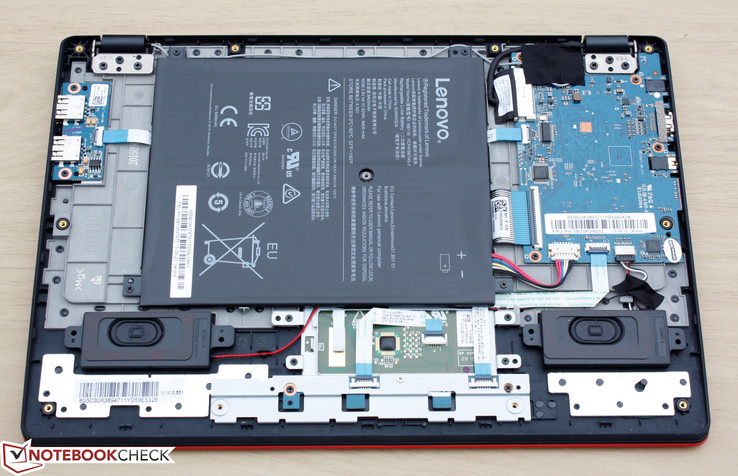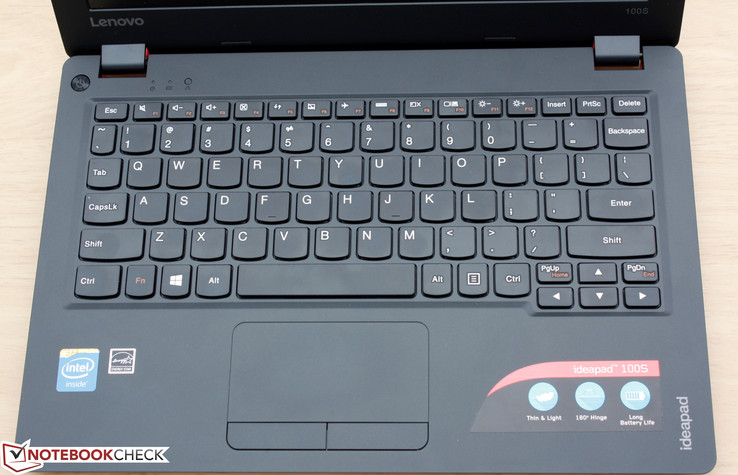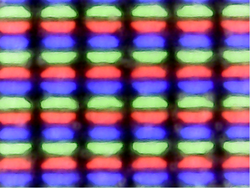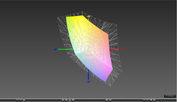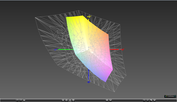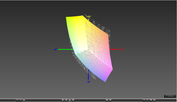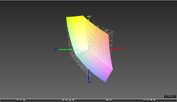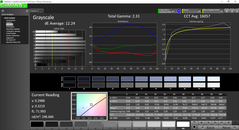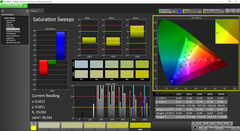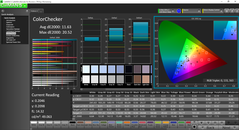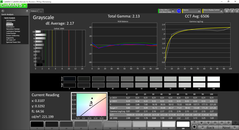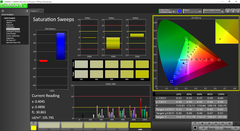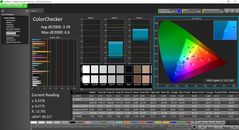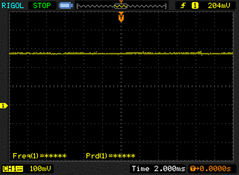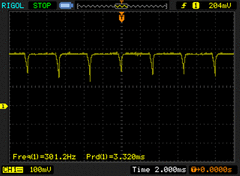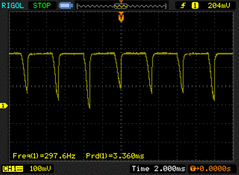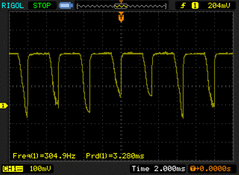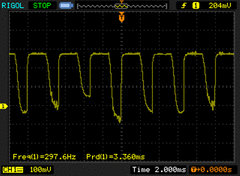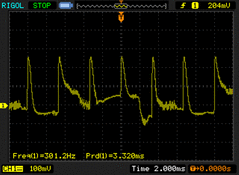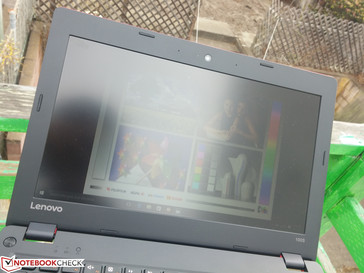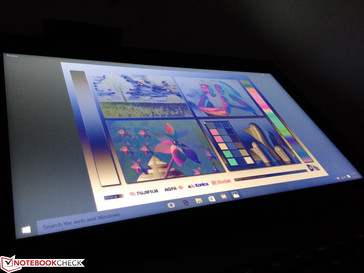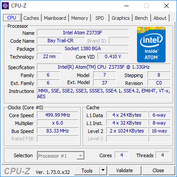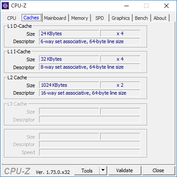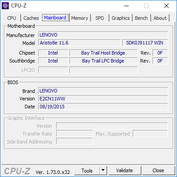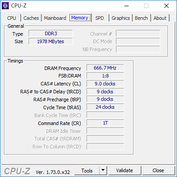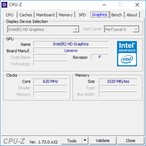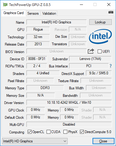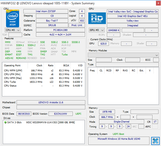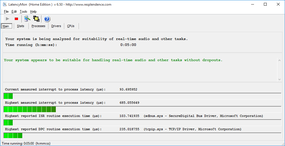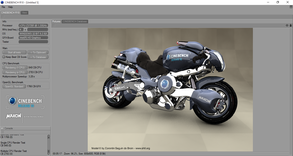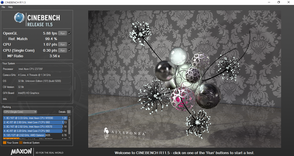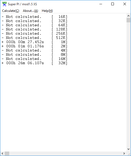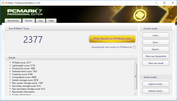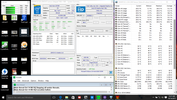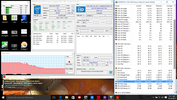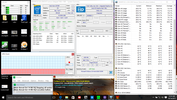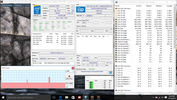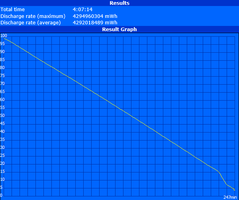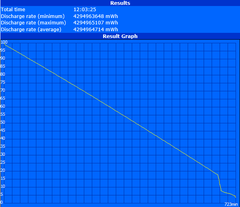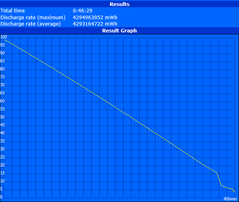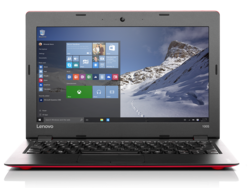Lenovo Ideapad 100S Notebook Review
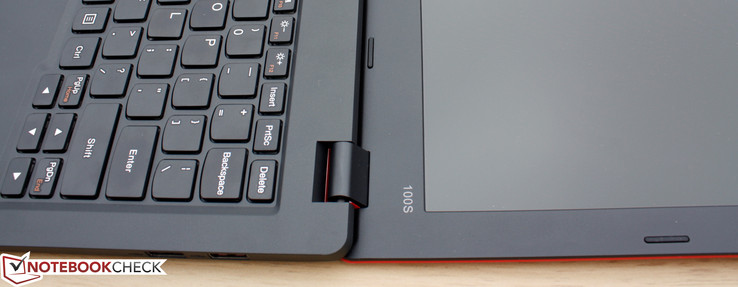
Lenovo revealed its refreshed Ideapad series along with a new take on the logo and naming convention in early August. The lowest on the reorganized totem pole is the Ideapad 100S (not to be confused with the standard Ideapad 100), which also comes as a Chromebook for those who prefer Chrome OS over Windows 10. The two netbooks were announced at IFA 2015 where we were able to go hands-on with the devices in Berlin.
Our model today is the 11.6-inch Ideapad 100S with Windows 10, 1366 x 768 display, Atom Z3735F Bay Trail CPU, 2 GB RAM, and 32 GB of internal storage. All hardware specifications are fixed as of this writing, so users do not currently have the option for different CPUs, display resolutions, or memory or storage sizes.
For just under $200, the Ideapad 100S is clearly aiming to be a secondary notebook primarily for browsing, travel, and Cloud connectivity. We'll compare it to other 11.6-inch netbooks like the HP Stream 11, Asus X200MA, and the Acer Aspire ES1 to see if Lenovo's latest portable is worth the small investment.
Case
The all-plastic matte chassis is smooth from top to bottom with no fancy texture or patterns applied. Instead, users can choose between four different colors for the outer lid and either a black or white keyboard and palm rests. The rounded corners and edges further separate this Ideapad from the costlier ThinkPad series. We do appreciate that Lenovo isn't adding any unnecessary touches such as rubberized or brushed surfaces to hide the fact that this is a $200 notebook.
Build quality is very good despite the simple chassis design. Twisting the lid side-to-side exhibits no major distortions or creaking. The base can be twisted just slightly, but exhibits no creaking as well. Pushing down on the center of the keyboard or outer lid results in just slight depressions that should be of no concern during use. The hinges are taut up to its maximum 180-degree angle. While not quite wide enough to be considered a Flex or Yoga, it does make the notebook a bit more versatile when working away from the desk.
As for size and weight, the Ideapad 100S is extraordinarily light at just under 1.0 kg. This is compared to the HP Stream 11 x360 (1.55 kg), Asus X200MA (1.24 kg), ThinkPad Yoga 11e (1.59 kg), and Acer Aspire ES1 (1.09 kg). The Lenovo netbook is consequently smaller and thinner than these competing models.
Connectivity
Physical ports include USB 2.0, MicroSD, and a full-size HDMI port. The system lacks a few core features such as VGA, RJ-45, a full-size SD card reader, and USB 3.0. The Asus X200MA, for example, offers the same amount of ports plus the missing extras in the same 11.6-inch form factor.
Communication
WLAN and Bluetooth 4.0 are provided by an integrated Realtek RTL8723BS with support for up to 802.11n networks. We experienced no connectivity issues during our time with the notebook. Unfortunately, there are no WWAN or GPS options available, either.
Accessories
Proprietary extras aren't available for the 100S. Users will get a Quick Start guide out of the box with optional USB mice and DVD burner options.
Maintenance
Opening the bottom panel requires only a Philips screwdriver and a sharp edge to detach the edges and corners. It's a relatively painless process, though users will find nothing of interest for upgrading. The motherboard is but a small section of the left side of the notebook, which will have an effect on surface temperatures as detailed in our Temperature section.
Warranty
Lenovo warranty options are one of the most versatile alongside HP and Dell. The base one-year limited warranty applies with options for in-Home repairs, accidental damage protection, and extensions.
Input Devices
Keyboard
The Chiclet keyboard is adequately sized (25.5 x 9.5 cm) considering the 11.6-inch form factor. The QWERTY keys themselves are 15 mm across and 3 mm apart. Travel is short as expected with a quiet-but-firm feedback. It's even shorter than the AccuType keyboards as found on most newer ThinkPad models, so it can be difficult to adjust. We would have liked to see a more satisfying click as each plastic key can feel stiff in addition to the cramped space available.
Aside from the main QWERTY keys, the smaller Arrow keys have softer feedback while the larger Shift, Enter, and Backspace keys have a louder click when pressed. The Dedicated Lenovo OneKey Recovery button next to the Power button simply opens the standard Windows Recovery menu.
Touchpad
Touchpad size is small (8.5 x 4.5 cm) even for an 11.6-inch netbook due to its inclusion of two dedicated mouse keys. This is compared to the Lenovo 11e Chromebook, which utilizes the larger glass touchpad on recent ThinkPad models at the expense of the two keys. The smooth touchpad is textured similarly to its plastic palm rests and exhibits no issues such as cursor jitters or noticeable latency. Note that the surface does not support multi-touch inputs and will not automatically disable when typing.
As for the mouse keys, both buttons are shallow in travel with loud and firm responses when clicked. Little effort is required to push each one and we definitely prefer them to the integrated solution on the ThinkPad 11e.
Display
The 1366 x 768 resolution display is standard for a notebook this size. We can observe no significant screen door effects or graininess on the matte panel of our test model. The maximum backlight brightness of just over 200 nits is good enough for indoor use. Many other netbooks offer similar brightness levels save for the Lenovo ThinkPad Yoga 11e and Acer Aspire E3, both of which can be as bright as 300 nits for improved outdoor visibility. A quick search for the BOE0623 panel name shows no other notebooks in our database sporting the same display as the Lenovo 100S.
Subjectively, color temperature is much too cool even before using measuring tools to confirm our suspicion. Colors are clearly inaccurate and the very high black level makes the 100S a poor choice for movies as the muddy blacks are significant enough to distract the user from enjoying the actual video. Most other netbooks offer higher contrast and potentially better viewing experiences in comparison.
| |||||||||||||||||||||||||
Brightness Distribution: 88 %
Center on Battery: 226.7 cd/m²
Contrast: 277:1 (Black: 0.817 cd/m²)
ΔE Color 11.63 | 0.5-29.43 Ø5
ΔE Greyscale 12.24 | 0.57-98 Ø5.3
60% sRGB (Argyll 1.6.3 3D)
38% AdobeRGB 1998 (Argyll 1.6.3 3D)
41.4% AdobeRGB 1998 (Argyll 2.2.0 3D)
60.3% sRGB (Argyll 2.2.0 3D)
40.07% Display P3 (Argyll 2.2.0 3D)
Gamma: 2.31
| Lenovo Ideapad 100S 80R2 | HP Stream 11 X360 | Asus X200MA-BING-KX366B | Lenovo ThinkPad Yoga 11e 20D9000QGE | Asus ASUS Transformer Book Flip TP200SA-DH04T | Acer Aspire ES1-131 | HP Pavilion 11-n070eg x360 | |
|---|---|---|---|---|---|---|---|
| Display | -1% | 7% | -0% | ||||
| Display P3 Coverage | 40.07 | 39.77 -1% | 42.72 7% | 39.87 0% | |||
| sRGB Coverage | 60.3 | 58.7 -3% | 64.4 7% | 59.9 -1% | |||
| AdobeRGB 1998 Coverage | 41.4 | 41.3 0% | 44.14 7% | 41.21 0% | |||
| Screen | 15% | 24% | 52% | 52% | 18% | 15% | |
| Brightness middle | 226.7 | 197 -13% | 187 -18% | 285 26% | 262.1 16% | 304 34% | 181 -20% |
| Brightness | 217 | 189 -13% | 181 -17% | 285 31% | 246 13% | 285 31% | 161 -26% |
| Brightness Distribution | 88 | 91 3% | 91 3% | 88 0% | 88 0% | 89 1% | 83 -6% |
| Black Level * | 0.817 | 0.4 51% | 0.34 58% | 0.4 51% | 0.301 63% | 0.67 18% | 0.37 55% |
| Contrast | 277 | 493 78% | 550 99% | 713 157% | 871 214% | 454 64% | 489 77% |
| Colorchecker dE 2000 * | 11.63 | 11.44 2% | 6.55 44% | 6.39 45% | 3.24 72% | 10.32 11% | 10.11 13% |
| Greyscale dE 2000 * | 12.24 | 12.54 -2% | 5.78 53% | 5.41 56% | 2.34 81% | 11.94 2% | 10.72 12% |
| Gamma | 2.31 95% | 2.45 90% | 2.71 81% | 2.76 80% | 2.24 98% | 2.37 93% | 2.7 81% |
| CCT | 16057 40% | 14995 43% | 7057 92% | 6082 107% | 6855 95% | 13480 48% | 13522 48% |
| Color Space (Percent of AdobeRGB 1998) | 38 | 38 0% | 40.6 7% | 38 0% | |||
| Color Space (Percent of sRGB) | 60 | 59 -2% | 58.8 -2% | 60 0% | |||
| Total Average (Program / Settings) | 15% /
15% | 12% /
18% | 52% /
52% | 30% /
40% | 9% /
13% | 15% /
15% |
* ... smaller is better
Color coverage is typical for a budget panel at 38 percent and 60 percent of AdobeRGB and sRGB, respectively. This is comparable to the Acer Aspire ES1 and Asus X200MA. The limited gamut should not be a concern for the target audience as tasks such as browsing, word processing, or gaming do not require the most accurate of colors.
Further color analyses with an X-Rite spectrophotometer confirm the inaccurate colors and grayscale out-of-the-box. Color temperature is much too cool and creates a Blue tint in most cases. Many displays on other 11.6-inch notebooks are more accurate without any calibration required.
The 100S improves dramatically after a calibration. Colors still become more inaccurate the higher the saturation level due to the screen's limited sRGB coverage, but color temperature is toned down significantly. A calibration is absolutely recommended for new owners. If not possible, then our provided profile above should help.
Pulse-width modulation can be measured with the help of an oscilloscope and photosensor. Windows 7, 8, and 10 each utilize 11 discrete steps of brightness from 0 to 10. The sharp shape of the curves for our Ideapad 100S suggests an LED backlight instead of CCFL and the steady frequency of ~300 Hz is thankfully above the 250 Hz minimum threshold deemed harmful to sensitive eyes.
Outdoor usability is acceptable under shade and below average when under direct sunlight. The backlight is simply not strong enough to overcome sunlight or even a bright overcast. The 180-degree hinges and matte screen help in providing an optimal viewing angle to reduce glare as much as possible.
Speaking of viewing angles, the TN panel severely limits the usefulness of the wide hinges. Pushing the display too far back will degrade colors almost immediately. The limited angles won't impact browsing or word processing unless if attempting to share the display with others nearby. An IPS panel could have improved outdoor usability tremendously, though likely for a higher starting price.
Performance
Currently, Lenovo only offers the 100S with the Atom Z3735F and integrated HD graphics. This quad-core Bay Trail processor is rated for a base speed of 1.33 GHz, but will idle at 500 MHz and can boost up to 1.83 GHz depending on the processing load. Note that this is the same processor as found on tablets such as the Acer Iconia Tab 10 A3 and Dell Venue 10 Pro.
The integrated Bay Trail GPU varies widely depending on the processor it is paired with. For our Lenovo, the GPU operates at a steady 620 MHz in most cases. No Boost can be observed for the GPU.
Single-channel RAM is soldered for a total of 2 GB with no SODIMM expansion slots. LatencyMon reveals no latency spikes with WLAN active.
Processor
CPU performance is 20 to 30 percent below the Celeron N2930 Bay Trail and the latest Atom x5-Z8500 Cherry Trail according to CineBench. Meanwhile, performance is 20 to 30 percent ahead of the Celeron N3050 Braswell and slightly ahead of the Celeron N2830 in multi-threaded tasks. It's worth noting that CineBench R10 shows our Lenovo behind the Atom x5-Z8500 while the opposite is true for the single-threaded Super Pi benchmark. Users can expect performance to be on par with budget processors like the AMD A6-4455M.
More comparison benchmarks and technical information on the Atom Z3735F can be found on our dedicated CPU page here.
| 3DMark | |
| 1280x720 Ice Storm Standard Physics (sort by value) | |
| Lenovo Ideapad 100S 80R2 | |
| Asus X200MA-BING-KX366B | |
| Lenovo ThinkPad Yoga 11e 20D9000QGE | |
| Asus ASUS Transformer Book Flip TP200SA-DH04T | |
| 1920x1080 Ice Storm Extreme Graphics (sort by value) | |
| Lenovo Ideapad 100S 80R2 | |
| 1280x720 offscreen Ice Storm Unlimited Graphics Score (sort by value) | |
| Lenovo Ideapad 100S 80R2 | |
| HP Stream 11 X360 | |
| 1280x720 Cloud Gate Standard Physics (sort by value) | |
| Lenovo Ideapad 100S 80R2 | |
| Lenovo ThinkPad Yoga 11e 20D9000QGE | |
| Asus ASUS Transformer Book Flip TP200SA-DH04T | |
| Asus Transformer Book T100HA-C4-GR | |
| Super Pi Mod 1.5 XS 32M - 32M (sort by value) | |
| Lenovo Ideapad 100S 80R2 | |
| Asus ASUS Transformer Book Flip TP200SA-DH04T | |
| Asus Transformer Book T100HA-C4-GR | |
| wPrime 2.10 - 1024m (sort by value) | |
| Lenovo Ideapad 100S 80R2 | |
* ... smaller is better
System Performance
Atom-based notebooks are poor performers when it comes to PCMark benchmarks. With our final score of 2377 points in PCMark 7, the Ideapad 100S is in the same ballpark as the HP Pro Tablet 608 G1 and the older Acer TravelMate P255. The integrated eMMC SSD helps, but the CPU is still the bottleneck. With that said, the final scores in both PCMark 7 and 8 are about where we expect them to be for a netbook. Competing models like the HP Stream 11 x360 and Acer Aspire ES1 score similarly, if not just slightly better due to their Celeron cores.
Subjectively, system performance is on the slow side as installations and applications take much longer to complete and load, respectively. Windows updates are incredibly slow to install and a cold boot can still take well over 40 seconds. The Windows 10 OS itself performs smoothly, though frame skips are a bit more common compared to standard notebooks.
| PCMark 7 Score | 2377 points | |
| PCMark 8 Home Score Accelerated v2 | 1029 points | |
| PCMark 8 Creative Score Accelerated v2 | 844 points | |
| PCMark 8 Work Score Accelerated v2 | 1140 points | |
Help | ||
Storage Devices
The integrated 32 GB eMMC isn't supposed to hold all your media or sensitive files since the 100S is designed to be used with Cloud storage services in much the same way as a Chromebook. Internal secondary slots are not available either, so users will have to rely on removable storage like USB drives and MicroSD cards for additional storage.
Transfer rates from the internal eMMC are slow for a SSD. Its sequential write rate is surprisingly low at just below 40 MB/s, which is lower than most mechanical drives and is comparable to many smartphones. Other netbooks, such as the HP Stream 11 x360 and its 32 GB eMMC, show similar results as our Lenovo.
GPU Performance
The passively cooled Atom CPU and integrated GPU are not for gaming. Running the Tomb Raider benchmark on the lowest settings and at XGA resolution will barely cracks 12 FPS. Frame rates will drop further after continuous play due to the throttling issues mentioned below. Sprite-based titles like Angry Birds and others should play without any issues.
Objectively, its final 3DMark 11 score of just 192 points is only 22 points above the current lowest entry in our database: The One Xcellent 10 tablet. This device also happens to be carrying the same Atom Z3735F CPU as our Ideapad 100S.
| 3DMark 11 Performance | 192 points | |
| 3DMark Ice Storm Standard Score | 14470 points | |
| 3DMark Cloud Gate Standard Score | 1133 points | |
Help | ||
| low | med. | high | ultra | |
| Tomb Raider (2013) | 12.5 |
Stress Test
The 100S does not perform very well in stress test situations. Running Prime95 will result in a stable 1.6 GHz CPU for the first couple of minutes, but this steadily drops to the 1.25 to 1.33 GHz range once core temperature reaches 65 to 67 C. Similarly, the GPU will operate at its base 620 MHz before throttling down to 300 MHz once core temperatures approach the 65 to 67 C ceiling. The core will maintain a stable temperature in the 55 to 60 C range at these throttled speeds.
Running Unigine Heaven to better simulate gaming stress unfortunately produces the same outcome. Both the CPU and GPU will drop to 500 MHz and 300 MHz, respectively, after just a few minutes. This means that heavy users can experience throttling with the 100S if running intensive applications. 3DMark 11, for example, resulted in a final Physics score of 1128 points, while subsequent runs resulted in a Physics score as low as 745 points.
Running on battery power appears to have no effect CPU or GPU performance, so users can still have the full power of the notebook if not connected to mains. Throttling, however, can still occur.
| CPU Clock (GHz) | GPU Clock (MHz) | Maximum Core Temperature (C) | |
| Prime95 Stress | 1.25 - 1.33 | -- | 65 - 67 |
| FurMark Stress | -- | 300 | 65 - 67 |
| Prime95 + FurMark Stress | 500 | 300 | 65 - 67 |
| Unigine Heaven Stress | 500 | 300 | 63 - 65 |
| Battery Power | 500 | 300 | 63 - 65 |
Emissions
Temperature
The fanless design will allow for silent operation, of course, but what about surface temperature? The left side of the notebook will always be warmer than the right no matter the workload, even when idling on the desktop. The delta is fortunately not major at only a couple of degrees between them.
Running extremely high loads for extended periods will accentuate the temperature differences. We were able to measure surface temperatures as high as 44.8 C near the left corner of the notebook. The Asus X200MA is better able to maintain low temperatures around the keyboard and palm rests for potentially more comfortable typing. Note that these are maximum values from running stress test benchmarks, so users are unlikely to experience such warm surfaces under everyday use.
Competing models like the ThinkPad Yoga 11e run much cooler while the HP Stream 11 x360 can run a few degrees warmer.
(±) The maximum temperature on the upper side is 44.8 °C / 113 F, compared to the average of 33.1 °C / 92 F, ranging from 21.6 to 53.2 °C for the class Netbook.
(±) The bottom heats up to a maximum of 42.8 °C / 109 F, compared to the average of 36.6 °C / 98 F
(+) In idle usage, the average temperature for the upper side is 27 °C / 81 F, compared to the device average of 29.8 °C / 86 F.
(+) The palmrests and touchpad are reaching skin temperature as a maximum (35 °C / 95 F) and are therefore not hot.
(-) The average temperature of the palmrest area of similar devices was 29.3 °C / 84.7 F (-5.7 °C / -10.3 F).
Speakers
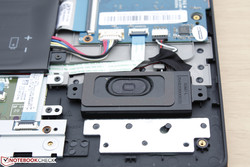
The 1 Watt stereo speakers perform as well as one would expect them to on a small netbook. Sounds lack bass to the point where the speakers might as well be tin cans. Users aren't expected to use the 100S for multimedia playback and may only want speakers that are loud and clear enough to fill a conference room. In this case, the 100S is quite loud even at the two-thirds setting and introduces no static at high volume.
Battery Life
The integrated battery pack provides great runtimes of almost 7 hours of constant WLAN use at a setting of 150 nits. Lenovo advertises 8 hours under the same settings, but we believe that our looping browser script is a more accurate representation of non-stop WLAN use. Users can still squeeze out just over 4 hours if under extreme processing loads at maximum display brightness.
It's worth mentioning that charging from nearly 0 percent to full capacity can take up to four to five hours. The notebook cannot be powered on if the battery is depleted even if connected to mains. Users will have to wait a few minutes for the battery to charge up a bit first.
| Lenovo Ideapad 100S 80R2 32 Wh | HP Stream 11 X360 44 Wh | Asus X200MA-BING-KX366B 33 Wh | Lenovo ThinkPad Yoga 11e 20D9000QGE 34 Wh | Asus ASUS Transformer Book Flip TP200SA-DH04T 38 Wh | Acer Aspire ES1-131 38 Wh | HP Pavilion 11-n070eg x360 29 Wh | |
|---|---|---|---|---|---|---|---|
| Battery Runtime | 0% | -30% | -27% | 28% | 36% | -45% | |
| Reader / Idle | 723 | 725 0% | 1055 46% | 337 -53% | |||
| WiFi v1.3 | 406 | 285 -30% | 297 -27% | 523 29% | 554 36% | ||
| Load | 247 | 268 9% | 157 -36% | ||||
| WiFi | 396 | 217 |
Pros
Cons
Verdict
The IdeaPad 100S targets a specific group of users who want a very small and very light notebook for simple tasks when traveling. Users who view detachables and convertibles as a sort of gimmick can fall back to this standard netbook with no such novelty features attached. Indeed, the 100S is thinner, lighter, and cheaper than competing notebooks by more than just a slight margin.
The path to such a small and inexpensive notebook gives way to missing or poor features that buyers should be aware of. Its lack of VGA, USB 3.0, 802.11ac, and a removable battery suggests that the notebook is tailored towards email, word processing, browsing, and other low loads only. Its throttling prevents it from playing popular games like LoL or DOTA at higher frame rates and the low contrast makes the notebook a poorer choice for media playback compared to competing models. We would like to see optional WWAN in the future even if it means a higher price point since the 100S is clearly geared towards users constantly on-the-go.
This is a surprisingly sturdy notebook given the price and size. We recommend that buyers perform a quick calibration on the display or use our profile above to fix the inaccurate colors and overly cool color temperature.
The Ideapad 100S is one of the lightest 11.6-inch netbooks you can buy. This comes at the cost of performance and some vital connectivity features that buyers should be aware of. Fortunately, build quality is better than expected.
Lenovo Ideapad 100S 80R2
-
10/16/2015 v4(old)
Allen Ngo


 Deutsch
Deutsch English
English Español
Español Français
Français Italiano
Italiano Nederlands
Nederlands Polski
Polski Português
Português Русский
Русский Türkçe
Türkçe Svenska
Svenska Chinese
Chinese Magyar
Magyar